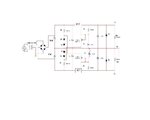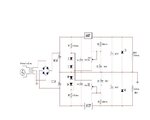Gauthier
Newbie level 6

At school I had to build this circuit on a protobaord, I started from the left to the right testing it between each layer. Everything was fine until I plugeg the 10uF capacitor on the negative side of the power supply.
Both 10uF capacitors are there to filter the noize that the potentiometers might be producing...
On the positive side, the 10uF capacitor have no effect or minimal on the output voltage.
But on the negative side, when the 10uF is unconnected everything work fine, we have our 1.2V refference voltage drop at the 120ohm resistance and the -10V at the output when the Pot is ajusted at 1kohm...
The prob is when we plug the capacitor, the Vref at resistance 120ohm drops to .7V and the output voltage is getting to max -6.9V when it should be at approximatly -10V.
My teacher first tought was that the signal was bad filtered and that it was rippling at high frequency so the cap act like a short or almost.
XC = 1/ ωc
so, we tryed with a .01 uF cap to boost the reactance , but the same trouble is existing.
Finally he told to everybodys in the class the take off the two 10uF capacitors til we find the cause of that.
So if someone has a good knowlege of the LM337/LM317 and can gives us some hints it would be appreciated.
Thanks
Gauthier
Last edited:

